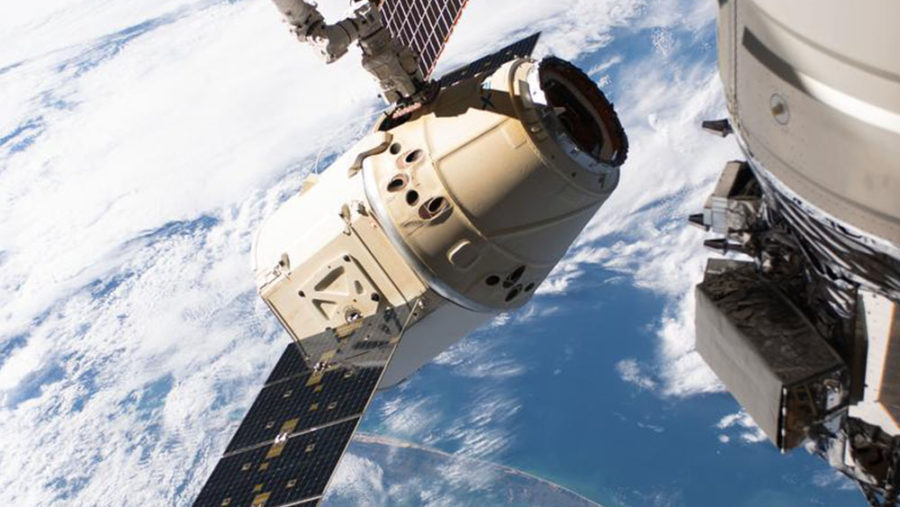SpaceX’s CRS-17 Completes Its Mission
Photo by: NASA
After a long stay on the International Space Station, the CRS-17 Dragon capsule departed the ISS and splashed down in the Pacific Ocean on May 3, completing the CRS-17 mission.
SpaceX successfully launched their Dragon spacecraft for its resupply mission to the International Space Station (ISS) at 2:48 AM EDT on Saturday, May 4, from SLC-40 at Cape Canaveral Air Force Station. Dragon C113.2 previously visited the ISS on the CRS-12 mission in 2017. The capsule, C113.2 was the last of the 13 first-generation Dragon capsules built by SpaceX. A small, blue ISS emblem is painted on the exterior of the Dragon to signify that the capsule has visited the ISS before.
Prior to departure, the Dragon was filled with around 4,200 pounds of return cargo and the hatch was closed. Some of the return cargo consisted of the Biophysics-6 experiment. On May 3, Dragon was un-berthed from the earth-facing port of the ISS’ Harmony module using the robotic arm called the CanadArm-2 and held by the arm 10 meters from the station. Canadian Astronaut David Saint-Jacques operated the arm during the event. At 12:01 PM EDT, the Dragon was released from the CanadArm-2.
After that, the Dragon’s Draco thrusters fired to maneuver the spacecraft away from the station and it slowly departed the imaginary zones around the station called the “Keep Out Sphere” and the “Approach Ellipsoid.” The “Keep Out Sphere is an imaginary sphere with a radius of 200m around the ISS which arriving and departing spacecraft travel through. The “Approach Ellipsoid” is the outer imaginary zone which is in the shape of an ellipsoid and is 4km wide.
After that, the Dragon orbited the earth for a few hours until the time of reentry. Then, the Draco thrusters fired for around 12 minutes to slow the spacecraft down and put it on a reentry trajectory. Before reentry, the Dragons trunk, containing the solar panels was detached from the main capsule and would later burn up in the Earth’s atmosphere. In addition, the Guidance Navigation and Control (GNC) door, which is opened during flight for the CanadArm to capture was closed in preparation for the heat of reentry. The spacecraft was protected from the searing heat of reentry by its thermal protection system, called PICA-X.
After Reentry, the Dragon first deployed its drogue chutes and then its main chutes to slow its speed prior to splashdown. Dragon splashed down in the Pacific Ocean around 202 miles southwest of Long beach, CA at 5:48 PM EDT. After splashdown, the SpaceX recovery ship, NRC Quest slowly made its way to the Dragon while fast-approach boats called zodiacs made their way to Dragon before the Quest.
Dragon was placed on the deck of the NRC Quest and made its way back to the port of Los Angeles. NRC Quest arrived to the port of Los Angeles around 22 hours after splashdown. Dragon was then offloaded from the Quest and onto the dock. After the time sensitive cargo is offloaded, the Dragon will be sent to the SpaceX test facility in McGregor, Texas. In McGregor, the remaining cargo inside Dragon will also be offloaded.


